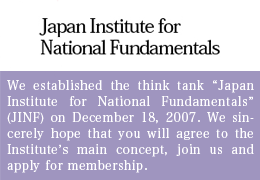What Truly Meaningful Assistance for Fukushima’s Rehabilitation Entails
The 14,000 residents of the nuclear-blighted Fukushima town of Namie will soon seek an increase in their monthly compensation for “mental anguish” from ¥100,000 to ¥350,000 per person. Unable to return home since the March 2011 equake and subsequent nuclear disaster, the evacuees are requesting that the Tokyo Electric Power Company (TEPCO) pay the increase regardless of “age, sex, present health status, living condition, or circumstance of evacuation.”
At this juncture, TEPCO pays an indemnity to each head of household equal to his or her monthly salary prior to the disaster (except for evacuees from Hirono Town and Kawauchi village). In addition, a monthly payment of ¥100,000 is made per family member for mental anguish.
For example, a man who earned ¥300,000 a month prior to the disaster living with his wife and two children automatically gets ¥700,000 a month – a combined total of his old salary (¥300,000) and the compensation for mental anguish for the four members of his family (¥100,000 x 4 =¥400,000). However, if this new request were to be approved, his earnings will balloon to ¥1,700,000 a month – a combined total of his old salary plus compensation of ¥1,400,000 (¥350,000 x 4 members of the family). This sum does not include any compensation for loss of assets, i.e., loss of property.
On every visit to a host of regions across Fukushima, one is made to painfully come to grips with the harshness of the reality confronting victims whose lives have been seriously impaired. However, one cannot help being puzzled by this new turn of events. Something is seriously wrong with the government’s posture toward rehabilitating the victims of the March 11 disaster. In point of fact, measures for resettlement in the affected areas got off to a bad start under the Democratic Party of Japan administration. One cannot but feel that, if implemented, this latest compensation scheme would likely accelerate that bad start further in the wrong direction.
Needless to say, the people in Fukushima need economic assistance badly. However, it is pertinent that assistance over time should evolve from unconditional aid to an enlightened new form of support aimed at encouraging the victims to start working again and rebuild their lives on their own.
In Fukushima, however, assistance has been provided those who have continued to live as evacuees away from their hometowns, while those who have returned to their hometowns, or are considering doing, receive virtually no financial backing. What has been the outcome of this setup? There has been a succession of cases in which proprietors have failed in their efforts to appeal to their former employees to return to their old posts. Should they decide to return to their homes and start earning salaries working for their old employers again, their only income will be a monthly salary, with no monthly compensation for mental anguish. Not a small number of evacuees regard it as financially more sensible to receive more than their expected salary by not working, even if they are confined to temporary shelters. What then will happen if an additional ¥250,000 per month becomes available while still not working?
Mayor Baba’s Three-Point Appeal
Hasn’t the reality already become such that instead of helping the victims restore their previous lifestyles or contributing to a rebuilding of their old companies and hometowns, the compensation and various other financial assistance from TEPCO have made the victims more deeply dependent on the utility’s money? That presumably is why one frequently hears the criticism from those in the affected areas that the DPJ government misdirected TEPCO how it should utilize its funds to truly help the victims.
What, then, should the current administration do under the circumstances? First and foremost, it should encourage each of the evacuees to return to his or her hometown and start earning a living as soon as possible, instead of maintaining the current ineffectual system of paying compensation. Financial support — such as an extension of capital for former proprietors wishing to restart their businesses, as well as funds for evacuees who dare to return to their devasted homes – should be made available. This will help to move the evacuees out of their temporary shelters.
As for those evacuees who cannot return home due to high radioactivity, the government should undertake a major project to build a new town to accommodate them. The government should emulate the Ukrainian government which accomplished the amazing feat of building a new town in less than two years after the Chernobyl accident. There is no reason why Japan cannot do the same. The top echelon of the DPJ, including then prime minister Naoto Kan, did not bother to consult relevant material provided by the Ukrainian government. Instead, it forced TEPCO to assume full responsibility for the radiation-related damage, compelling it to continue paying compensation to this day. Of course, TEPCO is hugely responsible for the disaster resulting from the explosions of its atomic reactors, but I must stress that a lack of workable policy on the part of the government has resulted in an even worse situation. Why is it that the incumbent Liberal Democratic Party of Prime Minister Shinzo Abe has been unable to replace the old DPJ policy with what truly works? The LDP should also seriously reflect on its lack of vision.
It is under such circumstances that the town of Namie has made their request for the government’s Nuclear Damage Claim Dispute Resolution Center, asking it to mediate on its behalf. Mayor Tamotsu Baba raised three points in making his case for a significant increase:
1) At the time of the nuclear accident, TEPCO provided his town
no pertinent information whatsoever. TEPCO has yet to
apologize to Namie for its failure to provide information
that was vital to its inhabitants. Namie wants TEPCO to show
remorse;
2) Namie wants TEPCO to thoroughly decontaminate the town,
reducing radiation levels to below 1 milli-sievert; and,
3) The on-going compensation Namie evacuees are receiving,
¥100,000 a month, roughly equals the minimum compensation
one gets for an automobile accident under the terms of
compulsory vehicle liability insurance. And yet, unlike
traffic accidents, damage from radiation worsens day by day.
Therefore, Namie wishes to see its compensation increased
to ¥350,000 a month.
Stressing that he has come up with the figure bearing these three points in mind, Mayor Baba explains: “We all lived in peace before. After the accident, the number of Namie’s 7,700 households was drastically reduced; the 1,700 grade school and junior high school students were sent to a total of 699 schools in other parts of Fukushima Prefecture and elsewhere in the region. The number of proprietors who were members of the Namie Chamber of Commerce and Industry shrank from 660 to a mere 200, all of them scattered about. Willow trees have taken root in our paddies; their roots dig so deep that we will have to start with tilling the ground all over again if we want to seriously consider resuming farming. We want our land back in the form it initially was before the disaster. If that is not possible, we have estimated at ¥350,000 the compensation we merit for the economic loss each of us has sustained.”
The Government Must Be Held Responsible
A Namie man who runs a construction company in town remarked that he himself does not agree with the request, although he does understand the strong feelings of the residents, noting:
“When evacuation became necessary, all of us agreed with the mayor’s judgment and fled to the district of Tsushima, a mountainous part of Namie which is spacious and the farthest from the nuclear power station. But it turned out to be an area where a huge amount of radioactive particles fell because of the changing wind direction. The authorities must have realized it, as they had an access to SPEEDI (System for Prediction of Envionmental Emergency Dose Information). Because they didn’t share that infomraiton with us, we ended up spending several days in Tsushima, constantly exposed to radioactivity. Why didn’t they provide us the pertinent information then? Their failure is at the root of our profound mistrust of the authorities.”
I heartily sympathize with the people of Namie as I attempt to understand how strong the sense of desperation and stress must have been. At the same time, I cannot but notice some contradictions in the town’s contention, one of which is whom they are trying to obtain the compensation from. Surely, TEPCO’s responsibility cannot be repeated too often. But the one entity that must genuinely be held accountable should be the government.
In fact, it was the DPJ administration that refused to release pertinent information obtained through SPEEDI. It is also guilty for setting a highly unscientific safety standard of 1 milli-sievert in the affected regions, making it impossible for the evacuees to head for home.
Yuko Endo, Mayor of Kawauchi Village to which 1,300 villagers, or 40% of those who sought refuge, have since returned, expresses grave concern:
“I know Mayor Baba himself was worried, but it is as though the request for compensation of ¥350,000 a month has taken on a life of its own. His request is generally seen as excessive, and I feel it will be quite difficult to win the approval of the general populace. He had appealed to us to make the request together. But I don’t think Kawauchi Village, or other towns and villages in Fukushima, will side with Mayor Baba. I have for long stated that the support funds from the government and TEPCO have been nurturing a growing sense of dependence on the part of all of the residents. I am concerned that the request by Namie Town could very well weaken people’s spirit of self-reliance.”
While I truly feel sympathy for the people of Namie, I am gravely concerned that this request for an increase in compensation may make them look even less towards the future.
(Translated from “Renaissance Japan” column no. 563 in the June 27, 2013 issue of The Weekly Shincho)








